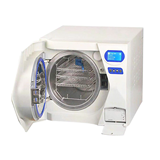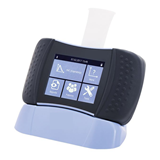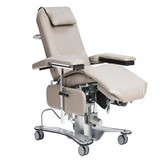Key Takeaways
- A patient engagement platform is more than a tool. It automates your most time-consuming administrative tasks, bookings, reminders, digital forms, and recalls, potentially reducing front-desk workload by up to 30%.
- ROI is measurable and quick. The main benefits are lowering “Did Not Attend” (DNA) rates, typically 5–8%, through automated reminders, and freeing staff to focus on higher-value work like patient care and billing.
- PMS integration is essential. Your platform must have real-time, two-way integration with your Australian Practice Management Software (PMS), such as Best Practice or MedicalDirector, to avoid double handling.
- Supports compliance and clinical governance. Automated recalls and preventative health workflows help practices meet RACGP Standards and improve patient outcomes.
- Data security is non-negotiable. Ensure the platform complies with the Australian Privacy Principles (APPs) and that data is securely hosted within Australia.
- Plan and implement with intention. Use a step-by-step rollout checklist to map workflows, train staff, and monitor performance, ensuring your PEP delivers maximum ROI from day one.
- Go digital-first with telehealth. Integrating telehealth into your PEP streamlines bookings, forms, and follow-ups, improving patient experience and reducing administrative burden.
- Measure, optimise, repeat. Track KPIs like DNAs, admin time saved, recall compliance, and patient engagement to continuously refine workflows and demonstrate clear financial and clinical benefits.
Introduction: Tackling administrative overload
In Australian medical practices, clinicians and admin staff face a constant pressure cooker of patient demand and documentation requirements. Receptionists spend hours on repetitive booking calls, typing patient details from paper forms, and chasing up recalls. Nurses often divert from clinical tasks to support administrative workflows.
This administrative burden contributes to staff burnout and inefficiency. According to the RACGP Health of the Nation report (2023), GPs spend a significant portion of their time on non-clinical tasks. Meanwhile, the Australian Digital Health Agency (ADHA 2024) found that most Australians now expect to book, reschedule, and complete forms digitally.
A Patient Engagement Platform (PEP) is no longer a “nice-to-have.” It is a strategic investment that automates communication between patients and your practice, freeing staff to focus on care, improving compliance, and delivering measurable financial and clinical returns.
What is a Patient Engagement Platform (PEP)?
A PEP complements your existing PMS. While your PMS manages clinical and billing data, a PEP automates patient-facing communications and workflows. Core features include:
- Online Booking System (OBS): Patients book appointments 24/7, with data synced directly to your PMS.
- Automated Reminders: SMS or email notifications significantly reduce DNAs.
- Digital Patient Forms: New patient or check-in forms completed online are automatically imported into the PMS.
- Automated Recalls & Reminders: Tracks chronic disease management and preventative health checks.
- Secure Messaging: Allows safe communication for results or non-urgent queries.
Platforms such as HotDoc, HealthEngine, and MedicalDirector integrations support these workflows for Australian practices.
Financial ROI: Reducing DNAs and admin costs
Consider a 5-doctor practice:
Before a PEP: Two receptionists spend 60–70% of their day on the phone, manually booking appointments. Admin staff spend 15% of their time typing patient forms, while nurses manually run recall lists.
After implementing a PEP:
- Bookings: Online booking adoption reaches 40% within three months, freeing the phone lines for complex calls.
- Forms: Digital patient forms save 10 minutes per patient and eliminate data-entry errors.
- DNAs: Automated reminders reduce DNAs from ~6% to ~2%, recovering roughly $160–$300 per day in missed revenue.
In many cases, the PEP subscription cost is offset entirely by reduced DNAs, with additional savings from staff time.
Clinical ROI: Improving compliance and patient outcomes
Automated recalls are critical for population health management. Nearly 50% of Australians have one or more chronic conditions.
PEP-driven recall workflow:
- The PEP identifies patients due for preventive checks, chronic disease reviews, or screening programs.
- Automated SMS or email invites patients to book appointments.
- Records are updated in the PMS, creating an auditable, medico-legally compliant trail.
This supports RACGP Standards 5th Edition, improves adherence to care, and reduces manual workload for staff.
Choosing the right platform for your practice
Key considerations for Australian practices:
- Deep PMS Integration: Real-time, two-way syncing with your PMS (Best Practice, MedicalDirector, Zedmed). Test this with a live demo.
- Privacy & Data Security: Must comply with APPs and the My Health Records Act. Data should be stored onshore in secure Australian servers.
- Local Support: Vendors should understand Australian MBS item numbers, billing rules, and operate in your time zone.
- Scalability: Modular solutions allow you to start with bookings and reminders and expand to digital forms or automated recalls.
Implementation checklist for practice managers
A Patient Engagement Platform (PEP) can only deliver real value if it’s implemented thoughtfully. Use this practical checklist to make the process smooth, efficient, and successful:
- Map your current workflows: Identify where your admin bottlenecks exist, bookings, recalls, forms, or reminders.
- Set measurable goals: Define key targets like reducing DNAs by 50%, freeing up 5+ hours of admin time per week, or increasing online bookings to 40% of total appointments.
- Check PMS compatibility: Ensure the PEP integrates with your existing system (Best Practice, MedicalDirector, Zedmed, etc.) in real-time, two-way sync.
- Plan your patient communication: Decide which messages will be automated, new patient forms, appointment reminders, follow-ups, and recall notifications.
- Test workflows before going live: Run a small pilot with a select group of patients and staff to identify errors, gaps, or missed steps.
- Train your team: Make sure all staff understand the platform, their roles, and how to troubleshoot common issues.
- Monitor, optimise, repeat: Review performance metrics weekly, make adjustments to templates or reminders, and track ROI over time.
This checklist not only ensures a smooth rollout but also helps your practice meet accreditation standards while maximising ROI from your PEP investment.
Telehealth integration and digital-first workflows
Modern patients expect convenience, and digital-first workflows are now table stakes for Australian practices. A PEP that integrates with telehealth platforms (like Coviu or HealthEngine Telehealth) allows you to:
- Offer seamless virtual appointments: Booked via the PEP and synced automatically to your PMS schedule. Patients receive all digital forms and reminders without extra admin effort.
- Combine in-person and virtual care: A single platform allows you to manage recalls, chronic disease management, and preventative care across all consultation types.
- Streamline clinical documentation: Notes from telehealth consults can be automatically attached to the patient record, reducing duplicate entries and errors.
- Enhance patient engagement: Patients receive SMS/email instructions, links to online forms, and follow-up messages, improving compliance and satisfaction.
By embedding telehealth into your digital workflows, your practice becomes more agile, reduces unnecessary phone traffic, and positions itself as a modern, patient-focused clinic.
KPI tracking and ongoing optimisation
Investing in a PEP is just the first step, measuring its impact ensures you continue to reap the benefits. Key performance indicators (KPIs) to track include:
- DNA (Did Not Attend) rate: Track pre- and post-PEP implementation. A drop from 6% to 2-3% can immediately recover thousands in lost revenue annually.
- Admin time saved: Measure hours saved per week for reception and nursing staff to quantify ROI.
- Patient engagement metrics: Track the proportion of patients using online booking, completing digital forms, or responding to automated recall messages.
- Recall compliance: Monitor completion rates for preventative care and chronic disease management, ensuring you meet RACGP standards.
- Staff satisfaction and workflow efficiency: Regular surveys and feedback loops help optimise templates, communication settings, and staff adoption.
Regularly reviewing these KPIs lets you fine-tune your workflows, identify additional opportunities for automation, and maintain high levels of patient satisfaction, all while demonstrating clear, measurable returns on your technology investment.
Conclusion
A Patient Engagement Platform is a critical infrastructure component for modern Australian practices in 2025. It reduces administrative load, lowers DNAs, improves patient outcomes, and ensures compliance. By automating repetitive tasks, you empower your staff to focus on clinical care while achieving a measurable return on investment, financially, operationally, and clinically.











-160x160-state_article-rel-cat.png)







